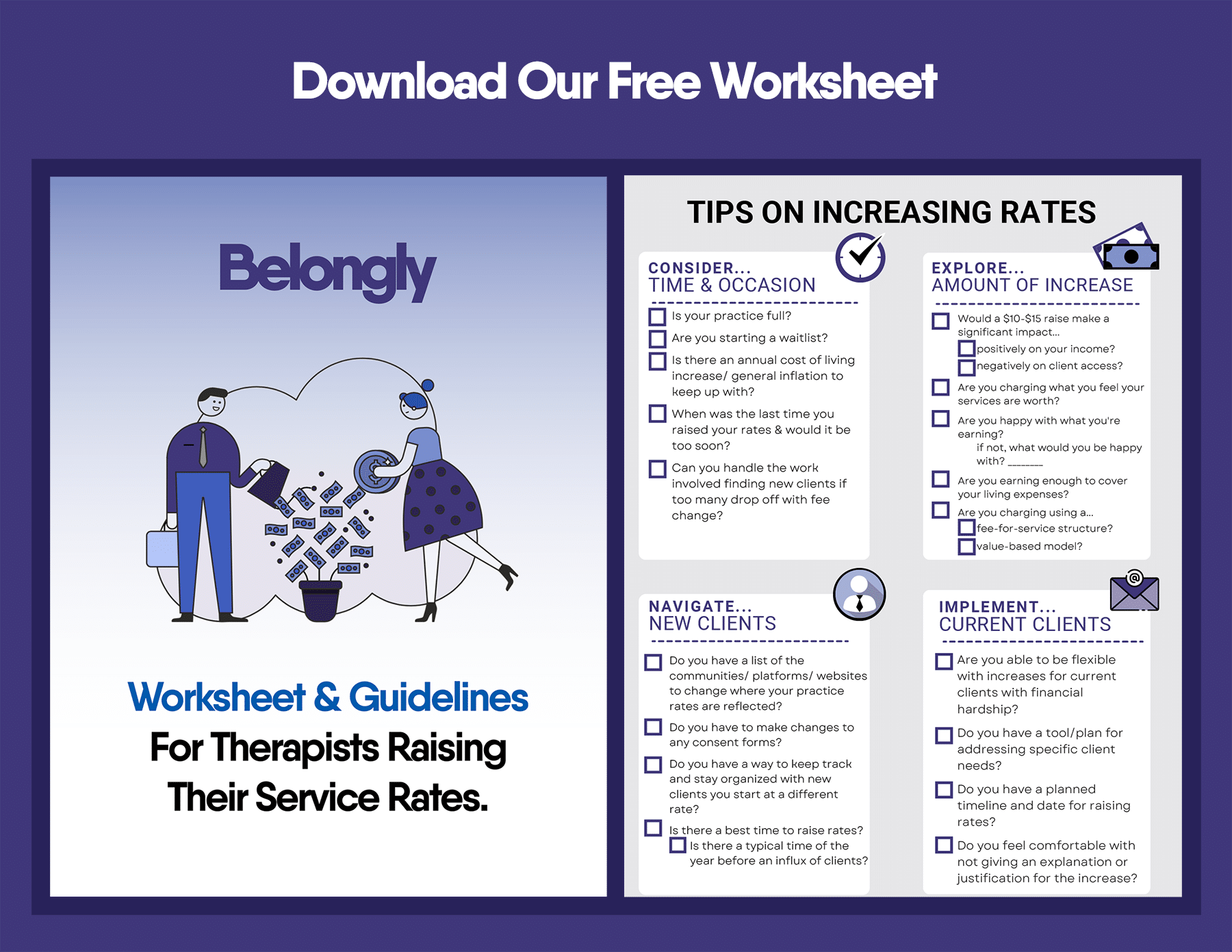Money is a fraught subject for most people, but research indicates that therapists have a particularly hard time talking about finances. After all, most of us were drawn to the profession for altruistic reasons, not to “get rich.” But just because we are a compassionate, morally-guided bunch doesn’t mean we are not entitled to financial stability.
On the contrary, if your current fee structure is such that you can’t afford to take time off or participate in other self-care activities, you risk resentment and burnout.
So, how do you set a fee that is both reasonable and reflective of your professional worth? Experts recommend figuring out how much money you need to thrive both personally and professionally, then working backward to establish your rates.
Step 1: Assess your annual cost of living
How much does it cost to afford your current lifestyle? Are there luxuries that you would like to afford going forward that you haven’t previously? Consider things like travel, dinners out, gym memberships, entertainment, and any other important contributors to your quality of life.
Step 2: Consider your ideal schedule
How many clients do you want to see per day/ week? How much time off do you want to take each year? Is it important that your schedule be flexible so that you can attend your kids’ sporting events or attend to family obligations? Answering these questions will help you set a target number of clinical hours.
Step 3: What are your professional expenses?
Add up how much it costs each year to maintain your practice. Consider things like liability insurance, licensure fees, CEU’s, rent and utilities, taxes and any marketing costs.
Step 4: Include any other sources of income
If you are like many therapists, therapy sessions are not your only source of income. Perhaps you earn some extra money by subletting your office, leading workshops, or teaching online courses. Make sure you include these additional sources of income in your calculations. (For more ideas on how to make money before your practice is established, click here.)
Step 5: Account for your no-show rate
Most therapists charge a fee for late cancellations and no-shows. But what about patients who cancel outside of the policy window, typically 24-48 hours? You’ll need to account for this loss of income when you set your rates. If you are just starting out, a more seasoned colleague should be able to provide you with an annual estimate for cancellations. Keep in mind that many patients are less consistent with appointments over the summer, due to travel and other activities.
Step 6: Break out the calculator!
Now that you’ve completed the above estimates, it’s time to put it all together to calculate your fee. First, add up your cost of living and professional expenses (steps 1 and 3), then subtract any sources of additional income (step 4). This will give you a target income.
- For example: Cost of living $135,000 + Professional expenses $75,000 – Additional income $20,000 = $190,000
- Second, take the number of clients you want to see per week, multiplied times the number of weeks you want to work each year, and add the projected number of cancellations. This will give you a target number of clinical hours for the year.
- For example: 25 clients/week x 48 weeks + 40 cancellations = 1,240 clinical hours
- Finally, take your target income and divide it by your target number of clinical hours.
- $190,000/ 1,240 = approximately $150/hour
Remember, this is just the minimum rate required to maintain your lifestyle and your practice. Once you’ve arrived at this number, you’ll want to do some market research to figure out what other therapists with your experience and credentials are charging and adjust accordingly. You might think that setting a lower rate will attract more business, but often this backfires by signaling a lack of experience or expertise.
Conclusion
Setting your rate as a therapist essentially boils down to how much you value your time and professional worth. If you undervalue these things, other people are likely to undervalue them, as well. Remember, there is no shame in wanting to be paid appropriately for your skill and expertise! Moreover, by following the steps outlined above, you will be protecting yourself against resentment and burnout.
Keep Reading
Want more? Here are some other blog posts you might be interested in.










